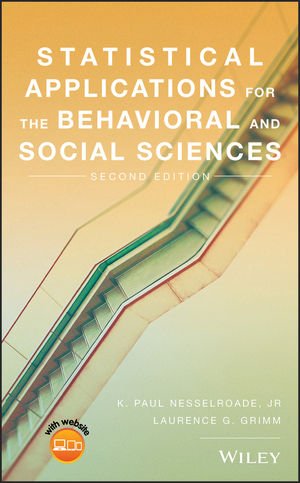(Essay found in Nesselroade & Grimm, 2019; pgs. 135-136)

The discovery of the normal curve is usually attributed to Abraham De Moivre (1667 – 1754); being traced to a publication of his from 1733 (De Moivre, 1738; English Translation). He was a friend of people like Edmond Halley (of Halley’s Comet fame) and Sir Isaac Newton and was held in high esteem by the intellectual class of his time. Apparently, Newton occasionally replied to questions with, “Ask Mr. De Moivre, he knows all that better than I do” (Walker, 1934, p. 322). De Moivre’s discovery grew out of his interest in the probability of chance occurrences, in which an event could take on one of two values. Imagine we wanted to know the probability of getting between 500 and 600 heads after tossing a coin 1000 times. Given repeated tosses, if the number of tails is plotted on the horizontal axis and the probability of obtaining any number of tails is plotted on the vertical axis, as the number of tosses increase, the graph begins to take on the shape of a normal curve. How De Moivre arrived at the formula for the normal curve is unclear, since it was the writing style of the day to publish results and conceal methods. It would be interesting to know De Moivre’s thought process because he used two constants from areas not associated with statistics: π, the ratio of the circumference of a circle to its diameter, and e, a constant that is used in calculating financial growth rates, exemplified by interest-bearing accounts.
Although the context of De Moivre’s discovery had to do with binomial events (i.e., two possible outcomes) and gambling procedures, the curve has extensive application to errors of measurement, a fact that has made it useful for the work of observing the movements of planets and stars. In addition, the curve approximates all sorts of raw score distributions, such as the heights of adult males in a given homogeneous population, obtained IQ scores for a given population, some personality variables, as well as innumerable naturally occurring variables, including things like the weight of a given species of wild rabbits and even the widths of foreheads of crabs. It was De Moivre who worked-out the area under the curve for distances up to three standard deviations. Because he worked out the formula for the normal curve and the areas under the curve, De Moivre is duly credited with the normal curve’s discovery. However, other mathematicians deserve credit for popularizing it.
The first person to extend the normal curve to continuous measures was the English mathematician, Thomas Simpson (1755). Suppose we are interested in determining the position of a star. Each independent observation will yield a slightly different number. The amount of variation among the numbers would be a function of the reliability of our instrument. However, which observation should we trust? It seems obvious today that the best way to handle this problem would be to minimize the error by taking the mean of all observations. However, this was not the practice prior to Simpson’s recommendation. He, however, understood how the normal curve could be used to counterbalance positive and negative error out of a final judgment.
The idea of the normal distribution was extended even further when the French mathematician, Pierre LaPlace (1749–1827), proved the Central Limit Theorem (a concept we will explore more in Chapter 7). This theorem is the single most important theorem in statistics. It allows for the use of sampling distributions in hypothesis testing. We will learn about the central role of this theorem in later chapters. In essence, the Central Limit Theorem states that the means of many samples from a population will be normally distributed. This allows us to use the normal distribution to figure the probability of obtaining a mean by chance.
The German mathematician, Carl Gauss (1777–1855), also popularized the normal distribution. In fact, the normal distribution is also called the Gaussian distribution. Gauss was one of the greatest mathematicians who ever lived; and one who showed promise right from the start. For instance, at the age of 3 it is said he discovered an error in his father’s calculations of employee wages! Later in Gauss’ life, when working at the University of Göttingen, Napoleon’s armies were advancing on the city. LaPlace is reported to have contacted Napoleon, his longtime friend, asking him to spare Göttingen because “the foremost mathematician of his time lives there” (Dunnington, 1955, p. 251). Gauss’ most lasting contribution was the use of statistics to relocate an asteroid. With only a few observations with which to work, Gauss predicted exactly where the asteroid, Ceres, would reappear. He was using the method of least squares; a method he invented, and which eventually found its way into modern statistics. Many mathematical curves today serve as statistical models. However, De Moivre’s normal curve serves as the cornerstone of descriptive and inferential statistics.
Find this and other spotlights on important statisticians in the Nesselroade & Grimm textbook.
De Moivre, A (1738/1959). “On the Law of Normal Probability.” In A Source Book in Mathematics, Vol. 2, edited by D. E. Smith. New York: Dover. pp. 566–575.
Dunnington, G. W. (1955). Carl Friedrich Gauss: Titan of Science. New York: The Free Press.
Simpson, T. (1755) “A Letter to the Right Honourable George Earl of Macclesfield, President of the Royal Society, on the Advantage of Taking the Mean of a Number of Observations, in Practical Astronomy.” Philosophical Translations of the Royal Society of London 46, pp. 82–93.
Walker, H. M. (1934). “Abraham De Moivre.” Scripta Mathematica 2, pp. 316–333.